Joshua Tree National Park is undoubtedly one of the world’s most incredible natural desert treasures spread over nearly 800,00 acres. Joshua Tree National Park is named after peculiar twisted Joshua trees that are native to the Mojave Desert. It is a national park formed by the amalgamation of two deserts, Mojave and Colorado. The beauty of Joshua Tree National Park shines around the clock, with picturesque sunsets melting into starry nights. The incredible rock formations make Joshua Tree National Park world-famous.
FEATURES
VIEWS STORYTELLING
HIKING
PHOTOGRAPHY
Before you get lost in Joshua Tree National Park prepare yourself by reading the map given below and head start your ranger trip without any problems.
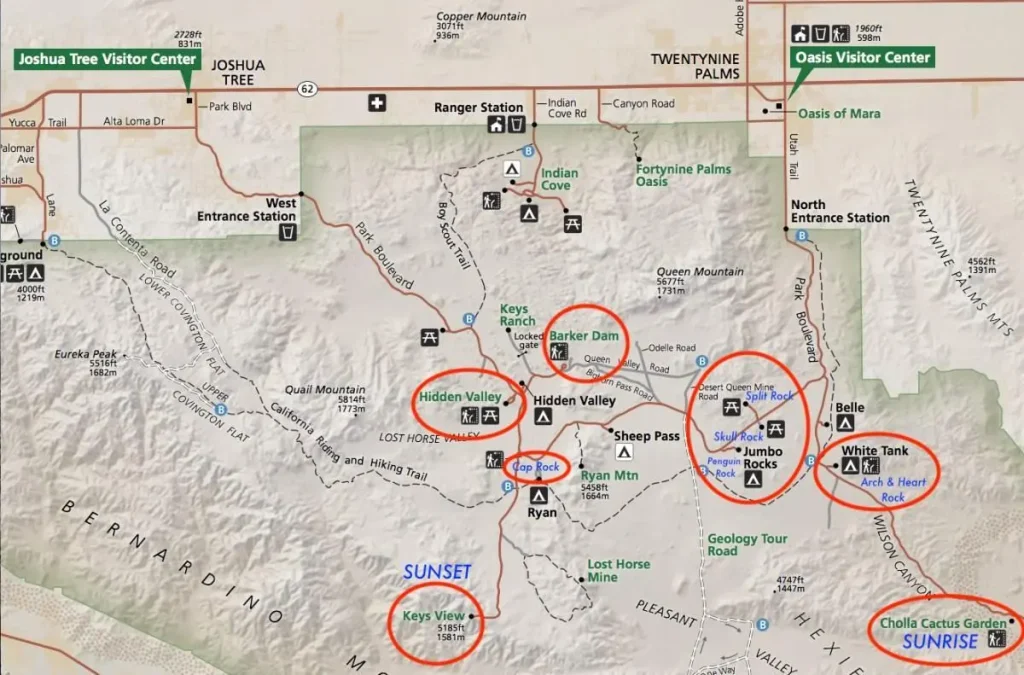
Entrance Fees for Joshua tree national park
- Auto (non-commercial)- $30 – Valid for 7 days
- Motorcycle – $25
- Individual – bicycle or walking – $15
- Joshua Tree National Park Annual Pass – $55/year
- “All National Parks” Annual (“Inter-Agency”) Pass – $80/year
- Senior Pass (62+) – $80/lifetime
- Current U.S. Military / Annual Pass – Free
Visit on a “Free” Day!
- January 16: Birthday of Martin Luther King, Jr.
- April 22: First day of National Park Week
- August 4: Anniversary of the Great American Outdoors Act
- September 23: National Public Lands Day
- November 11: Veterans Day
With so much to do in Joshua Tree National Park here is a guide to a few areas and activities which cannot be missed.
1. KEYS VIEW –
It is one of the favorite spots to start out. By climbing up at key view you can get a panoramic view of Southern California’s highest mountains, Mount San Jacinto and Mount Gorgonio with the Salton Sea stretching out in the distance. To have the best view all you have to do is pick a clear morning. It is a well-worth 20-minute drive from Park Boulevard. It is one of the easily accessible viewpoints in Joshua Tree National Park. Visitors can drive to a parking lot just below the viewpoint. It is wheelchair accessible.
Points to be seen:
- COACHELLA VALLEY – Straight ahead from the keys view is coachella valley.
- SALTON SEA – One of the world’s largest inland seas and among the lowest point on the planet, it sits directly on San
Andrea’s fault can be seen on the left.
- SAN GORGONIO MOUNTAIN – It is the highest peak in Southern California and is on the right of the Keys view. often covered with snow.
- PALM SPRINGS – The glamorous city of Palm Springs is visible at a distance as sunsets.
- SAN JACINTO MOUNTAIN – it is also among California’s tallest mountains and visible from the spot.
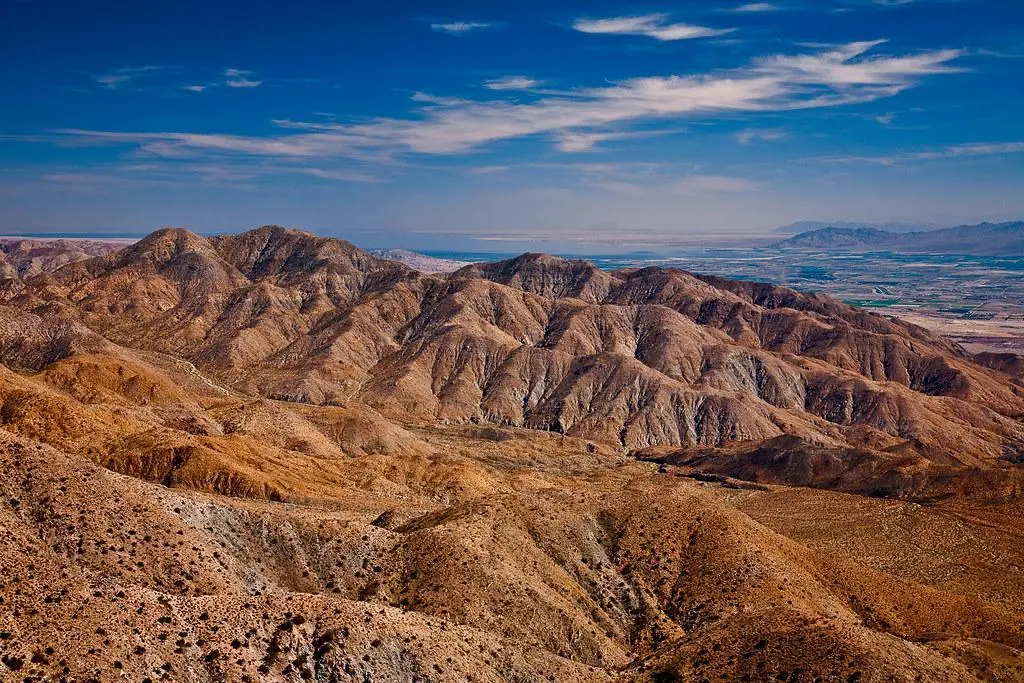
- MEXICO – Signal Mountain of Mexico can be viewed from Keys Point. It is only 90 miles away but clearly visible on a clear sky day.
2. ARCH ROCK –
It is 1 mile into the loop section. It is among the popular spots for photography in Joshua Tree National Park. The wayside signs along the trail would describe the unique geological characteristics in the area. The first part of the trail is sandy however the loop section is mostly rocky. Be prepared to explore the trail without any shade or cell service. During summers it is advised to start the trail before 10 am and be loaded with plenty of water. A weather forecast check before heading to the park is a must.
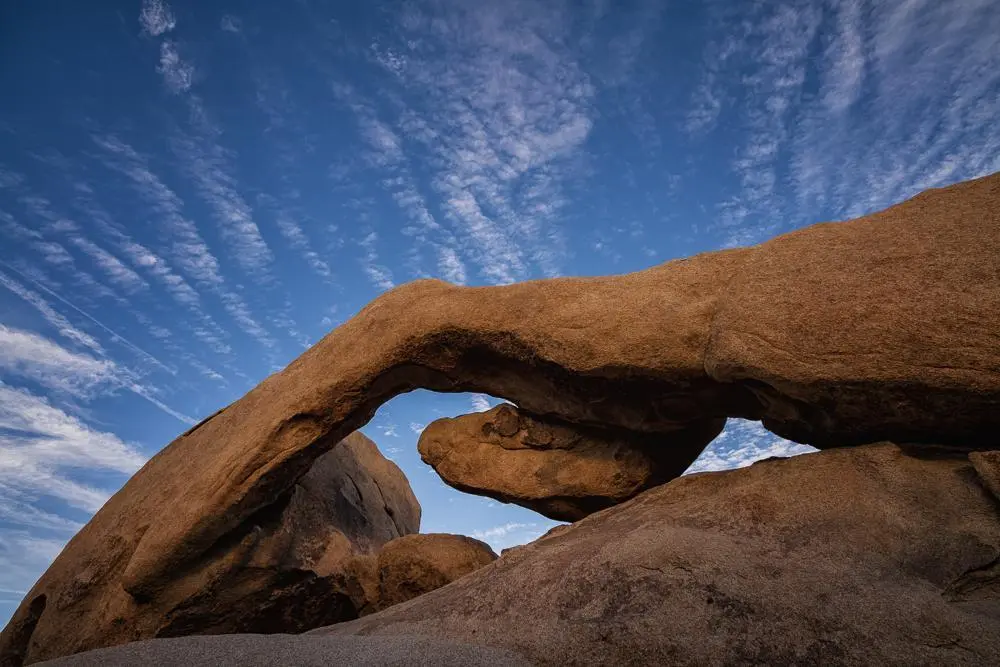
Checklist before hiking:
1. Inform someone where you are heading.
2. Stay hydrated.
3. Duration – 45-90 minutes
4. Pets not allowed
5. Click plenty of photographs and don’t forget to enjoy.
3. HEART ROCK –
One of the most prized possessions of Joshua Tree National Park. It is an undocumented hidden gem. The rock is shaped like a heart and it is located around the arch rock. There is no specific marked trail to reach heart rock, only proficient navigators can attempt to find it under the advice of the National Park Service. The rock is around 10 feet tall and it rises above the boulder field in the Joshua tree desert. It is the perfect place for proposals and social media posts.
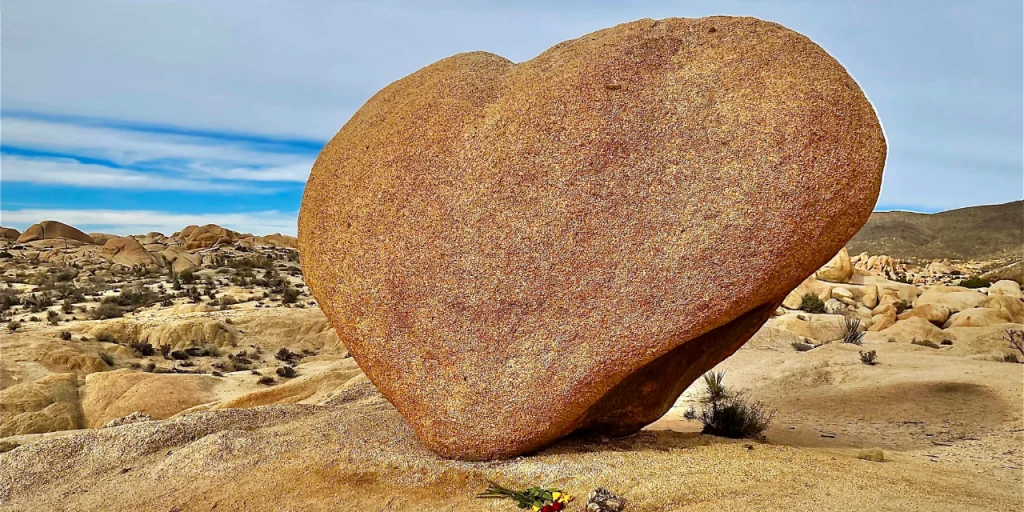
The unexplained facts of how this isolated heart-shaped rock are standing in the desert attract all the visitors.
4. SKULL ROCK –
The skull rock sits just off the main Joshua Tree Road. It is a replica of a skull with two sunken eyes and a skull-shaped rock. There is an easy 1.5-mile nature trail loop that starts from the Skull Rock parking area which passes through the desert washes and boulder piles.
It is quite easy to spot Skull Rock, also it is one of the most popular and easily accessible rock formations in the park where you will find a lot of crowds for most of the day. The rock got the shape of an accumulation of raindrops in a tiny depression which started eroding the granite. As more water accumulated more granite eroded and formed two hollow sockets and the rock started resembling a skull.

5. ROCK CLIMBING –
Joshua Tree National Park is famous for its boulder rocks with unique cracks, slabs, and steep face climbing. There are over 8,000 climbing routes which range from easy to extreme difficulty levels. It is one of the favorite world-class climbing destinations. Even if you are not a climber you will be fascinated by seeing the climbers in action. The thrill and enthusiasm are amazing.

The park rangers offer special programs and free ranger-led walks and talks that educate visitors about the park’s geography, wildlife, and plant life.
6. CHOLLA CACTUS GARDEN –
Being a dessert what would be more fascinating than the vegetation of cholla cactus? It is believed to be the world’s densest population of cholla cactus. To reach the cholla cactus garden the trail is easy and flat, around 0.3 miles, also the most treacherous in the park. It is located in the middle of the park. The cactus is unique in its own way. They may appear enchanting but beware as if you get close or brush against them the spines can penetrate your clothes, skin, and shoes too as they are too sharp. It may be painful to remove them.
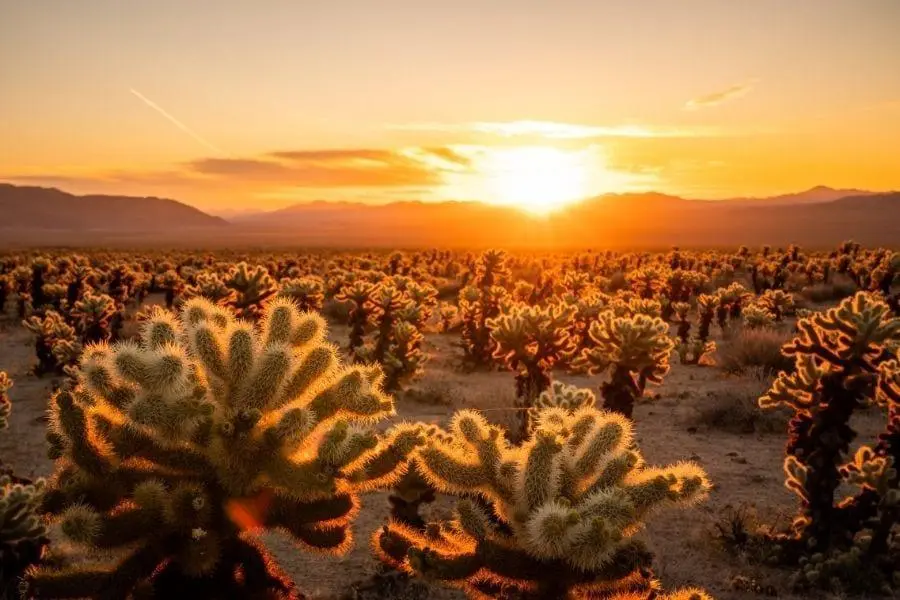
It is also one of the favorite spots to enjoy the sunrise. During sunrise, this place becomes so majestic.
7. CAMPING AND STARGAZING AT COTTONWOOD CAMPGROUND –
Nothing could be more beautiful than being surrounded by surreal landscapes and sleeping under a sky full of stars. Joshua Tree National Park grants its night visitors a tour of dazzling star displays. Very recently Joshua Tree National Park is designated an INTERNATIONAL DARK SKY PARK. During summer, the milky way is often visible on moonless nights.
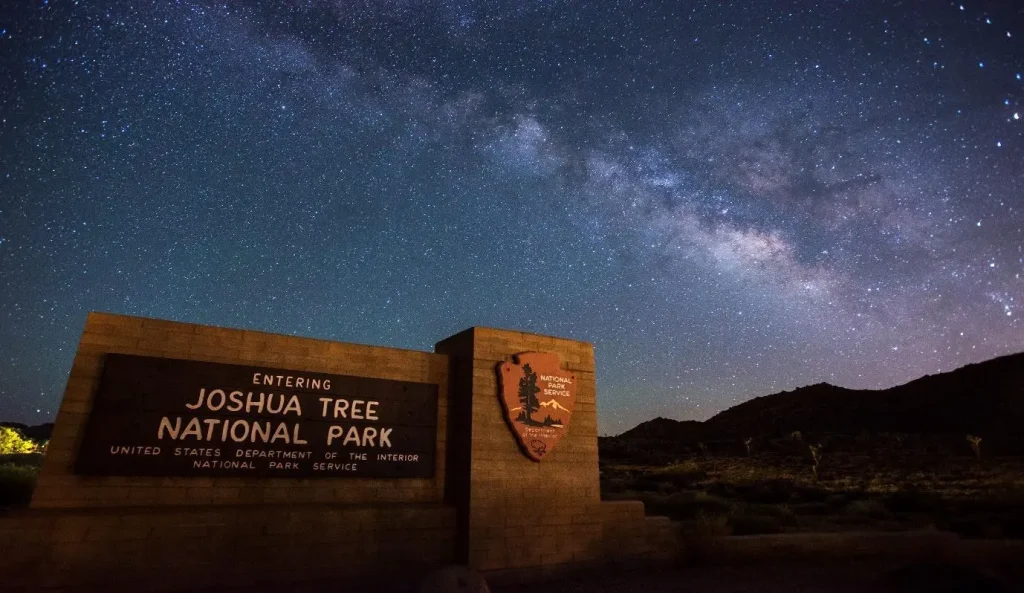
The Milky Way is visible from April- September.
8. JOSHUA TREE –
It is one of the most important aspects of the Mojave Desert. Joshua Tree represents the story of survival, resilience, and beauty. It is a habitat for numerous birds and animals that are native to Joshua Tree National Park.
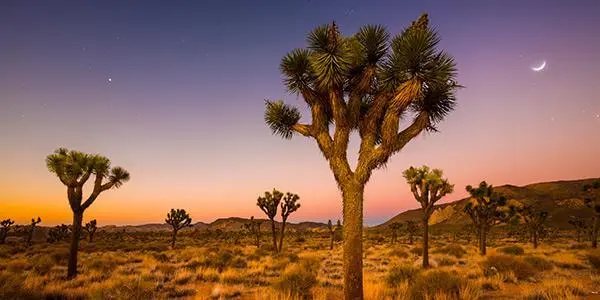
The Joshua trees are as old as 2.5 million years which makes them rare and special. Be cautious while clicking selfies and photographs near the tree as it is home to various spiders and venomous animals. Legend has named it after the biblical figure, Joshua, seeing its limbs outstretched in supplication, guiding the traveler westwards.
9. COTTONWOOD SPRING OASIS –
Cottonwood spring oasis was a surprisingly overlooked spot in Joshua Tree National Park but as a result of an earthquake very recently 500 gallons of water was forced up at the surface of the earth. This water-rich soil provides water to native palms here that are approaching 100 years of age. It is also home to desert trees – cottonwood. It is clearly visible from the parking lot.
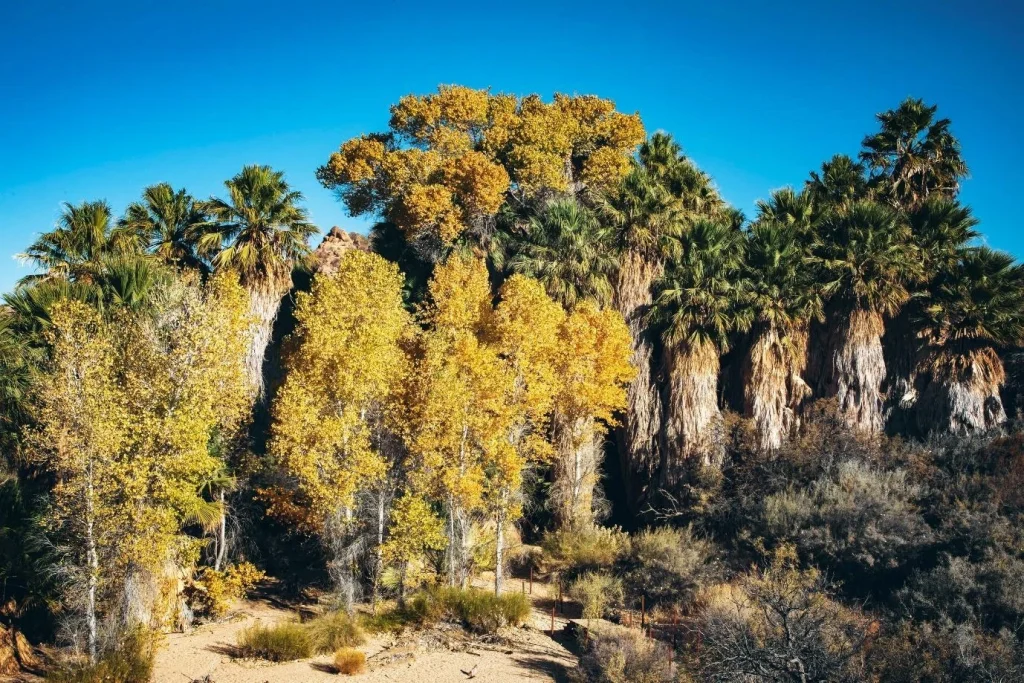
10. BARKER DAM –
It is also known as Big Horn Dam. Which is a water storage reservoir in Joshua Tree National Park. It is a gathering place for almost all the species prevailing in Joshua Tree National Park. The dam is easily accessible through an easy loop trail of around 1.5 miles. The park offers a Barker Dam Nature Hike which is led by a ranger. It is a very popular trail and also crowded. It is registered on the National Register of Historical Places.
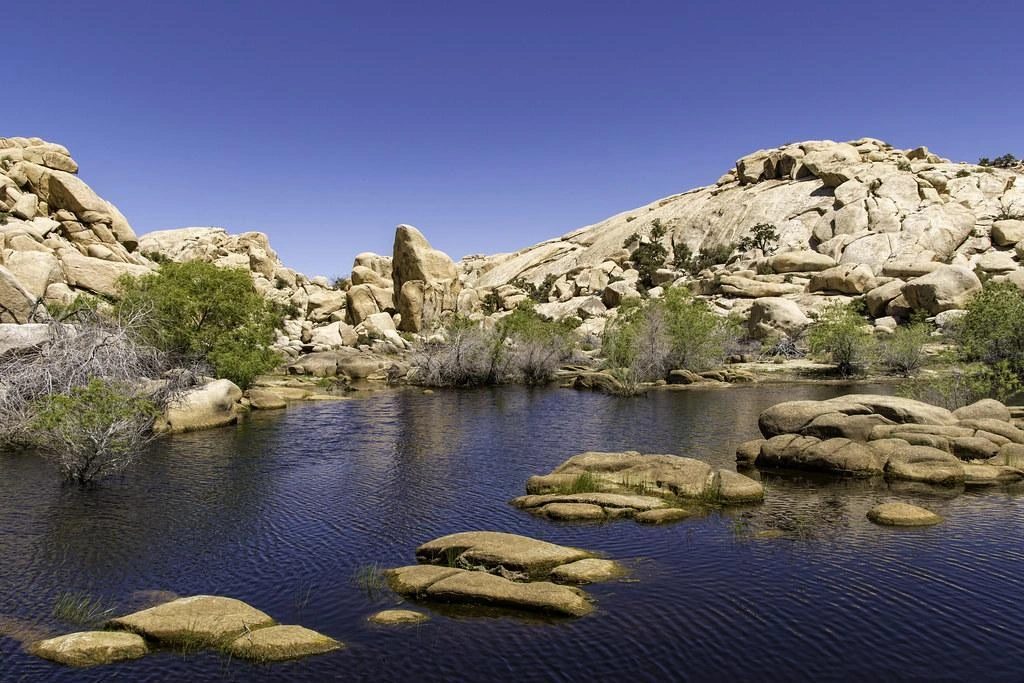
11. DESERT QUEEN MINE –
It is believed that once it was a very profitable mine which is now a part of Joshua Tree National Park. The gold was discovered in 1894 and the mine was operational till 1961. The secrets are hidden behind the doors of the mine. There are various stories of robberies, thefts, and betrayal which keep its visitors engaged.
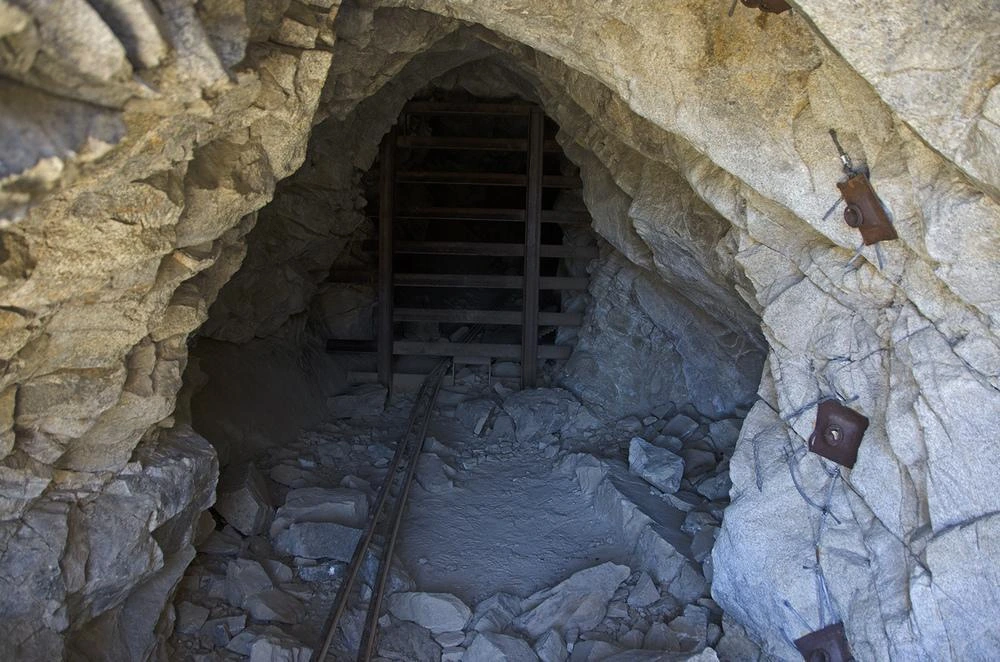
Spread over such a huge area, Joshua Tree National Park cannot be explored in just one visit. The visit demands a lot of patience and alertness to handle any kind of situation. Learn to read the map or visit the help center for more information.
THINGS TO KEEP IN MIND WHILE VISITING JOSHUA TREE NATIONAL PARK
- KEEP TRASH AWAY – Be responsible and pack all the trash along with you.
- ALWAYS LEAVE A NOTE – Always tell someone when you will be back and where you are going. Please call 909-383-5651 or 911 in case of an emergency.
- BYOW- Bring your own water and bring more than what you drink normally. Potable water is almost not available in most of Joshua Tree National Park.
- BE EARLY VISITOR- To avoid crowds and sun reach before 9 am.
- NEVER BRING A PET ALONG -The desert is hot and filled with prickly and sharp plants. Make an arrangement for them.
- ALWAYS HAVE A BACKUP PLAN- things may get out of control so it’s better to be prepared.
- WEAR STURDY SHOES IN THE DESERT AND WATCH YOUR STEPS
- For further details, you can download the NPS App, one app for every park. It will give you detailed and interactive maps, tours of park places, amenities, accessibility, and much more to plan your national park adventures before and during the trip.
- KEEP A CHECK OF WEATHER AND CLOSURES- some parts or some trails may be closed for maintenance and the weather also can be extreme it would be better to keep a check.